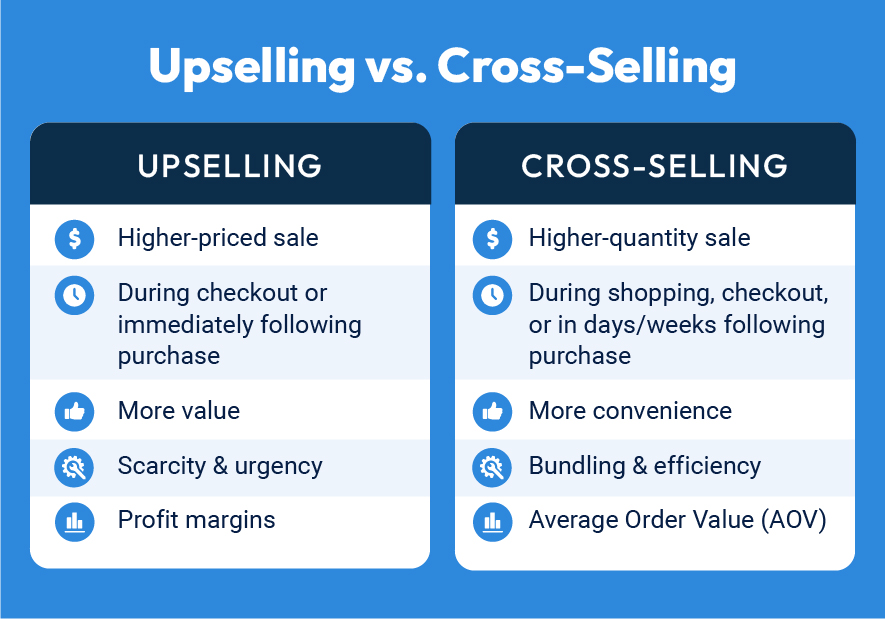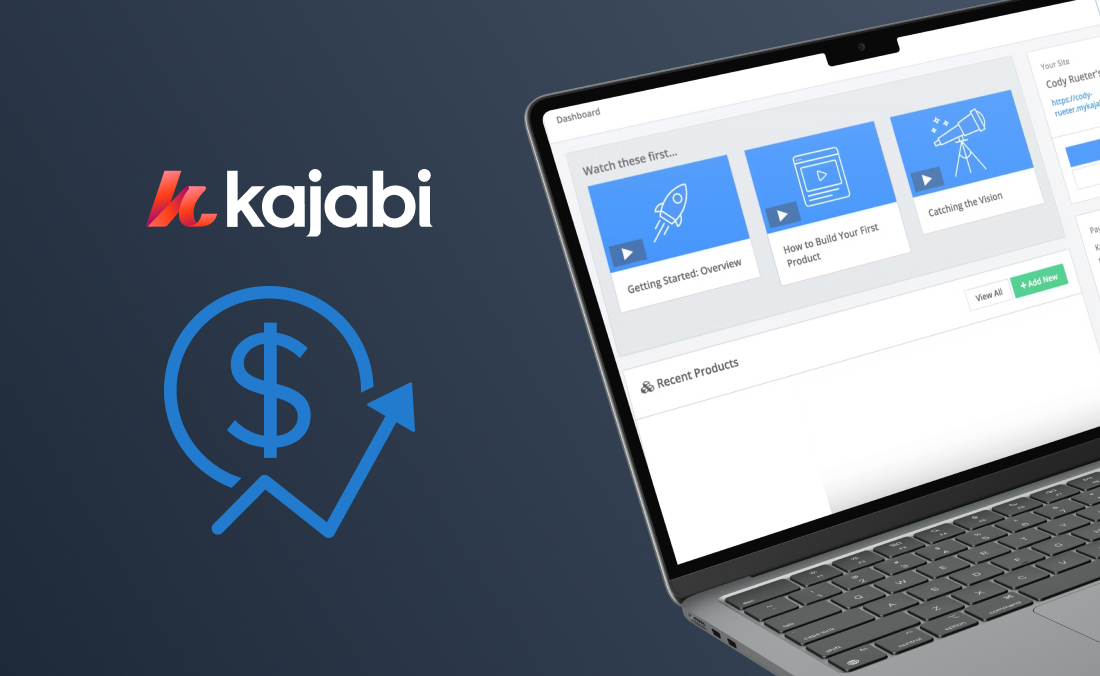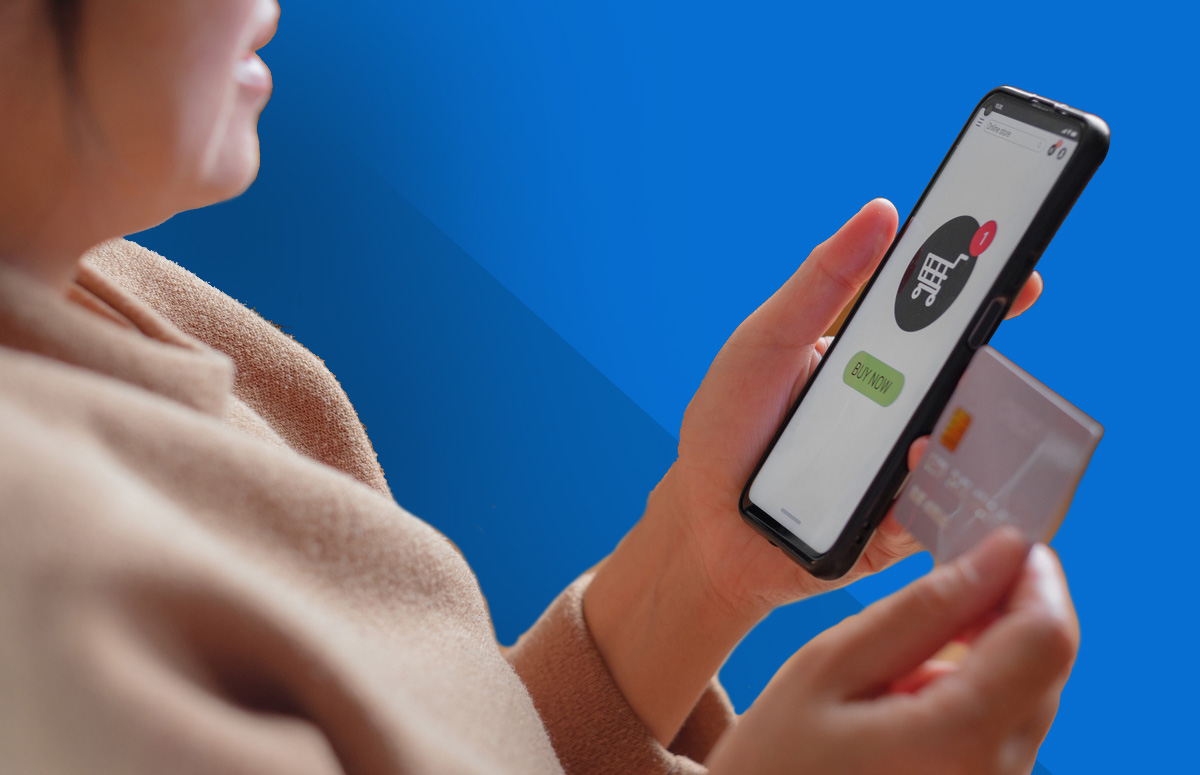Cross-selling and upselling are two popular marketing strategies designed to increase profits during the sales process. Both techniques are effective strategies for increasing the lifetime value of a customer and are used by online and offline businesses. However, there are five key differences between cross-selling and upselling that you need to understand so you can choose the best tactics for your sales funnel.
What is upselling?
An upsell is an offer made to prospective customers inviting them to purchase an upgrade, usually at the time of checkout or purchase. Upselling increases the average order value (AOV) of a sale by enticing customers to upgrade to a higher-value version of the product or to choose additional features that enhance their initial purchase.
Example of Upselling
An online course creator could create tiered membership levels. A basic or standard membership would provide access to the core content and basic features of the online course. An upsell offer for an upgraded membership level could include additional benefits such as exclusive content, live coaching sessions, personalized support, or advanced features.
Pricing pages, pop-ups, and check-out page callouts can be used throughout the funnel to highlight the value and unique advantages of the upgraded membership.
What is cross-selling?
Cross-selling is a sales technique where businesses recommend complementary items or additional products to customers based on their initial purchase interest. This strategy focuses on increasing revenue by suggesting products that enhance or work alongside the customer’s primary purchase rather than upgrading the same product. Cross-selling helps customers discover complementary products they might have missed while allowing businesses to maximize sales opportunities and provide more comprehensive solutions.
The key to successful cross-selling is understanding customer needs and offering genuinely helpful product combinations that add value to their original purchase. When done effectively, cross-selling can improve customer satisfaction while increasing the average transaction value and building longer-lasting customer relationships.
Example of Cross-selling
Perhaps the most well-known example of cross-selling is Amazon’s “Frequently Bought Together” or “Customer Also Bought” features, which most leading eCommerce businesses have copied to boost revenue.
Cross-Selling vs Upselling: 7 Key Differences
Both upselling and cross-selling are effective digital marketing tactics, each playing a different role in your sales strategy. Understanding these five differentiators will help you determine when to implement one or the other.

1. Product Type Offered
The most basic difference between cross-selling and upselling is the type of offer. In an upsell, the goal is to sell a higher-priced or higher-end version of the product, while cross-selling offers encourage customers to purchase additional items directly related to the new products they’re buying.
2. Timing of the Offer
Cross-selling and upselling can occur at any time along the customer journey; however, most businesses use them strategically during the bottom-of-funnel sales process to increase the AOV.
An upsell offer for a premium version of a product is most effective on the checkout page — or immediately after the initial purchase is completed, like on a post-purchase confirmation page. Once someone makes a purchase, they’ll be open to spending even more money.
Cross-selling opportunities are typically placed on the product page or during the checkout process in the form of related products and/or featured bundles. Unlike upselling, cross-selling can also be used to encourage additional purchases in the days and weeks following the initial purchase. Sales funnel software helps to segment existing customers into lists based on their purchase history so that you can market relevant products to them.
3. Value Perception
While an upsell is often a great value and in the customer’s best interests, the sales pitch may not always give that impression. For this type of offer to be done right, the customer needs to see the upsell as an incredible value compared to the original product. If poorly presented, the offer can feel like an overly aggressive marketing strategy that pushes a more expensive product and puts the company’s bottom line first. This outcome results in lower conversion rates and a poor customer experience.
Before making a strong upsell push, it’s important to develop a robust understanding of customers’ needs by testing your messaging to learn what resonates with them best.
Cross-selling rarely has this challenge. Cross-selling strategies such as product recommendations are usually perceived positively. They frequently improve customer satisfaction and customer retention, which then increases customer lifetime value.
4. Sales Techniques Used
Upsell and cross-sell funnels perform best when the sales approach is tailored to the funnel strategy.
Scarcity is a technique commonly used to create urgency in upsell opportunities. Limited-time offers or openings put pressure on the customer to upgrade their purchase or risk losing the opportunity. For example, a coach’s “inner circle” members might be limited to a certain number of open spots each year, or special bonuses may expire 24 hours after the initial purchase.
One of the most popular cross-selling techniques is bundling—a sales tactic that discounts related products if they’re bought together. For example, an individual product may be priced at $40 with a cross-sell offer to get three for $100. Convenience, speed, or shipping discounts are also effective ways to add value for customers who purchase multiple products or services.
5. Metrics Tracked
A proper upsell offer should be designed to increase a company’s profit margins. Be sure to track the profit margin on the upsell to ensure that the added features not only provide added value to the customer but also create an economy of scale for you.
The primary metric to be tracked when cross-selling is the AOV, or average order value. If your product recommendations and bundling strategies are working, the average sale for each transaction should increase over time. Funnel software’s automation can organize each customer’s purchasing habits and help identify new cross-selling opportunities.
6. Customer Commitment Level
Upselling typically requires a higher level of customer commitment, as it involves investing more in a single solution or product category. Cross-selling, however, allows customers to experiment with different product categories at their own pace, often with lower individual purchase amounts. This makes cross-selling particularly effective for building trust and exploring new product relationships with customers.
7. Implementation Complexity
Upselling usually requires more detailed product knowledge and customer support, as customers need to understand and utilize additional features or premium benefits. Cross-selling tends to be simpler to implement, as each product typically functions independently. This difference affects how businesses structure their customer onboarding and support systems for each strategy.
Explore funnel ideas in our guide: 7 Examples of Digital Sales Funnels That Generate Leads
Which technique should I use?
Whether you choose an upsell or cross-sell funnel — or a combination of both — your marketing strategy will depend on your business structure and goals:
- Do you offer a wide range of products? Use cross-selling to increase repeat customer purchases and create more diverse revenue streams.
- Are you focused on new customer acquisition for a select high-margin service? Combine an entry-level offer with a strong upsell for increased profits.
- Does your business perform best with a limited number of dedicated clients at one time? A combination of upselling for higher value, and cross-selling related items or services to existing clients can deepen your customer relationships and increase revenue.
Examples of Upselling and Cross-Selling
3 Cross-Selling Examples
- A business coach who sells a leadership course might cross-sell a complementary “Executive Communication Workshop” that helps clients implement their leadership skills through better presentation and communication techniques.
- An eCommerce store selling yoga mats could cross-sell matching yoga blocks, straps, and carrying bags during checkout, offering a “Complete Yoga Starter Kit” bundle at a discounted price compared to buying items separately.
- A social media consultant offering Instagram management services might cross-sell a content creation package that includes custom graphics and caption writing, ensuring clients have high-quality assets to use in their managed posts.
3 Upselling Examples
- A digital marketing consultant offering a basic SEO audit package ($497) could upsell to a comprehensive SEO implementation package ($1,997) that includes the audit plus hands-on optimization, content planning, and three months of monitoring.
- An eCommerce brand selling skincare products could upsell from a standard 30-day supply ($29) to a premium 90-day subscription ($75) that includes priority shipping and exclusive seasonal products.
- A web designer offering a standard website package ($2,500) could upsell to a premium package ($4,000) that includes enhanced features like membership functionality, advanced analytics integration, and priority support for 6 months.
Example of Combining Upselling and Cross-Selling
A photographer offering a newborn photoshoot could upsell a multi-session package covering the baby’s milestones throughout the first year of life, and cross-sell a “First Year” photo album for the family to receive after the first birthday.
How to upsell and cross-sell like a pro
How to build the perfect upsell or cross-sell funnel looks different for every business, but here are a few key principles to follow as you implement these digital marketing strategies.
Keep Researching Your Audience
Successfully persuading a customer to make a purchase decision requires an in-depth understanding of who they are. Your upsell or cross-sell offer needs to resonate with what your customers value, their pain points, and their stage of the buyer journey. A thorough understanding of your audience is the foundation of any successful sales funnel.
Build out buyer personas based on customer feedback, testimonials, surveys, quizzes, purchase behavior, and your own audience research. And remember — you’ll need to continue gathering customer data as your business grows to make sure your offers are still relevant.
Improve Results with A/B Tests
The first version of your upsell or cross-sell offer will be an educated guess. You’ll have to make some assumptions about what design, medium, and messaging will capture your audience’s attention. To perfect your upsell techniques or cross-sell sequence, incorporate regular A/B testing and implement what you learn about the best way to engage your customer base.
Leverage High-Quality Sales Funnel Software
From purchase add-ons to automated email sequences, upselling and cross-selling efforts can be as simple or complex as you need them to be. Your funnel software should give you all the tools you need to set up automated funnels that drive more sales and improve customer loyalty.
Whether you’re a small business owner, online course creator, coach, or B2B service provider, high-quality sales funnel software makes building automated, effective digital funnels fast and easy.
Kartra is an all-in-one marketing platform with access to all the features you need for planning, creating, optimizing, and tracking your marketing campaign performance. Plus, the funnel simulation feature lets you project your funnel’s potential results to see which types of funnels will work best for your offer!


